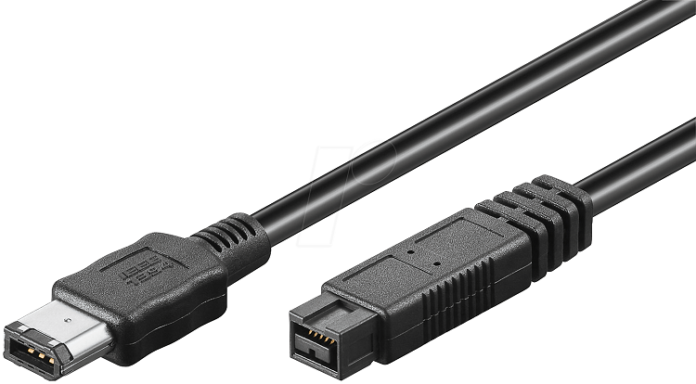Remember the sleek Firewire ports adorned on your old camcorder or Mac laptop?
While often labelled obsolete, Firewire, also known as IEEE 1394, still holds relevance in some areas.
While Firewire usage in consumer electronics has dwindled, it maintains a niche presence in professional audio-visual and industrial applications.
But is it time to fully relegate its status to tech relic? Let’s delve into the world of Firewire, exploring its capabilities and how it compares to its modern counterpart, USB.
What is a Firewire Cable?
With a distinctive 6-pin or 9-pin connector, Firewire cables support bidirectional data transmission, meaning information flows in both directions simultaneously.
Unlike its micro-USB sibling, Firewire can even power connected devices, eliminating the need for external power supplies.
How Does Firewire Work?
Think of data as tiny items travelling down a road. Firewire uses a serial approach, sending bits one after another like cars in a single lane. This ensures smooth, uninterrupted data flow, crucial for real-time audio and video applications.
Unlike USB, which relies on a host computer to manage data communication, Firewire devices can “talk” directly to each other, reducing processing load and enabling you to hook multiple devices up to each other.
USB vs. Firewire
Both USB and Firewire are used to transfer data, but they cater to different needs. Here’s a deeper dive into their strengths and weaknesses:
Speed
Newer USB iterations like USB 3.2 (20 Gbps) and the new USB4 (40 Gbps) significantly surpass Firewire’s speeds. When at its peak of popularity, Firewire 800 boasted 800 Mbps compared to its contemporary rival USB 2.0’s 480 Mbps.
Device Compatibility
USB reigns supreme. You’ll find it on virtually all laptops, smartphones, and consumer electronics. Firewire is primarily available in niche professional devices. It was featured on most Apple computers and laptops from the late 1990s to the early 2010s, but has since faded from view to most consumers.
Cost
Firewire components are generally more expensive to manufacture, reflecting in slightly higher device prices. This perhaps influenced so many manufacturers choice to opt for USB connection.
Firewire’s Use Cases: Is It Still Relevant?
- Professional Audio/Video: Firewire remains in use for high-end cameras, recorders, and editing software. Its speed and reliability ensure smooth, uninterrupted workflows.
- Industrial Automation: Its ruggedness and real-time capabilities make it suitable for industrial control systems and robotic applications.
- Storage Solutions: While external hard drives primarily use USB, high-performance storage solutions for creative professionals still leverage Firewire.















